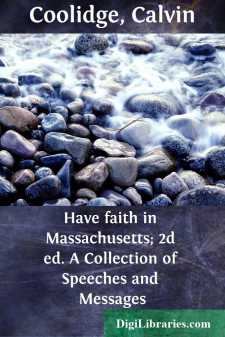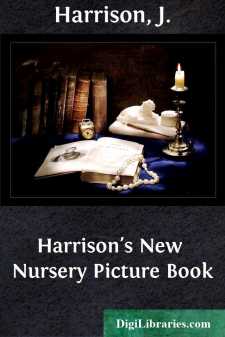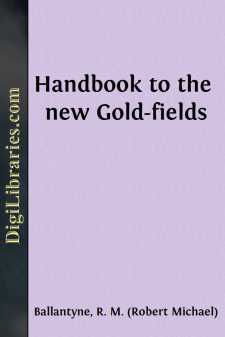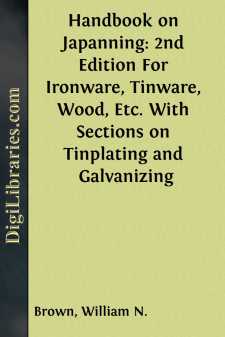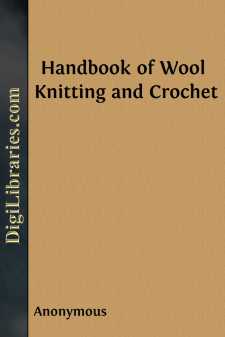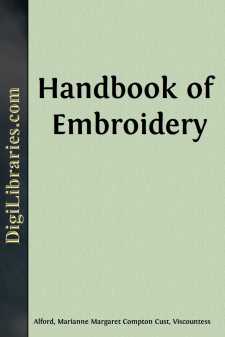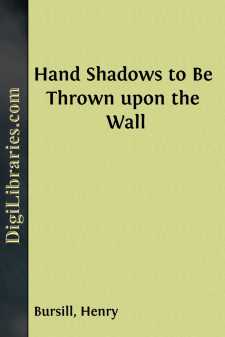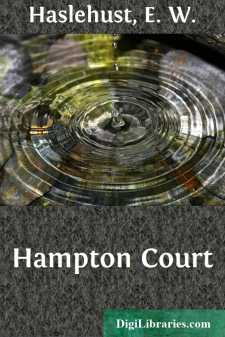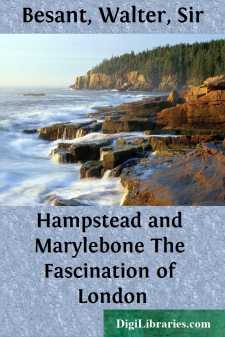Non-Classifiable
- Non-Classifiable 1768
Non-Classifiable Books
Sort by:
by:
John F. Runciman
CHAPTER I JOSEPH HAYDN It is, as a rule, inexpedient to begin a book with the peroration. Children are spared the physic of the moral till they have sucked in the sweetness of the tale. Adults may draw from a book what of good there is in it, and close it before reaching the chapter usually devoted to fine writing. But the case of Haydn is extraordinary. One can only sustain interest in a biography of...
more...
by:
Calvin Coolidge
NOTE TO SECOND EDITION In the issue of a second edition of this collection of Governor Coolidge's speeches and messages, the opportunity has been taken to add a proclamation and three recently delivered addresses, which bring the volume practically up to the date of publication. Boston, October, 1919 The Commonwealth of Massachusetts. By His Excellency CALVIN COOLIDGE GOVERNOR A PROCLAMATION...
more...
by:
J. Harrison
HARRISON'S NURSURY PICTURE BOOK, CONTAINING SEVENTY INTERESTING ENGRAVINGS. Printed and published by J. Harrison,AND SOLD BYTHE LONDON BOOKSELLERS AND STATIONERS.Price Sixpence. ENGRAVINGS.PRINTED BY J. HARRISON, DEVIZES, AND SOLD BY THE London Booksellers and Stationers.PRICE SIXPENCE. The little Pony and his rider. The little Automaton Lady. Crusoe preparing to build a House. Crusoe rescues his...
more...
Handbook to the New El-Dorado. The problem of colonisation in the north-western portion of British America is fast working itself out. The same destiny which pushed forward Anglo-Saxon energy and intelligence into the rich plains of Mexico, and which has peopled Australia, is now turning the current of emigration to another of the “waste-places of the earth.” The discovery of extensive goldfields...
more...
by:
William N. Brown
INTRODUCTION. Japanning, as it is generally understood in Great Britain, is the art of covering paper, wood, or metal with a more or less thick coating of brilliant varnish, and hardening the same by baking it in an oven at a suitable heat. It originated in Japan—hence its name—where the natives use a natural varnish or lacquer which flows from a certain kind of tree, and which on its issuing from...
more...
by:
Anonymous
Handbook of Wool Knitting and Crochet A Lesson in KnittingFigure 1. Casting on with Two NeedlesThe first thing to be done in knitting is to cast on or, as it is sometimes called, to "set up the foundation." (). There are several methods for this, the following being that preferred and generally used by the writer: Leave a spare end of thread, sufficient for the number of stitches you wish to...
more...
PREFACE. In drawing up this little “Handbook of Embroidery” we do not pretend to give such complete technical directions as would enable a beginner in this beautiful art to teach herself; because learning without practical lessons must be incomplete, and can only lead to disappointment. We have sought, therefore, only to respond to the inquiries we are constantly receiving, and to supply useful...
more...
by:
Henry Bursill
PREFACE I need not explain how these Shadows were suggested, to any one who has seen WILKIE'S picture, "The Rabbit on the Wall." But by what pains they were invented can never be revealed; for it is known to my tortured digits alone, and they, luckily for me, are dumb. I calculate that I put my ten fingers through hundreds of various exercises before my "Bird" took wing; my left...
more...
by:
E. W. Haslehust
For combined beauty and interest—varied beauty and historical interest—there is no place “within easy reach of London”, certainly no place within the suburban radius, that can compare with the stately Tudor palace which stands on the left bank of the Thames, little more than a dozen miles from the metropolis and, though hidden in trees, within eye-reach of Richmond. It is not only one of the...
more...
by:
Walter Besant
HAMPSTEAD The name of this borough is clearly derived from "ham," or "hame," a home; and "steede," a place, and has consequently the same meaning as homestead. Park, in a note in his book on Hampstead, says that the "p" is a modern interpolation, scarcely found before the seventeenth century, and not in general use until the eighteenth. HISTORY Lysons says that the Manor...
more...



